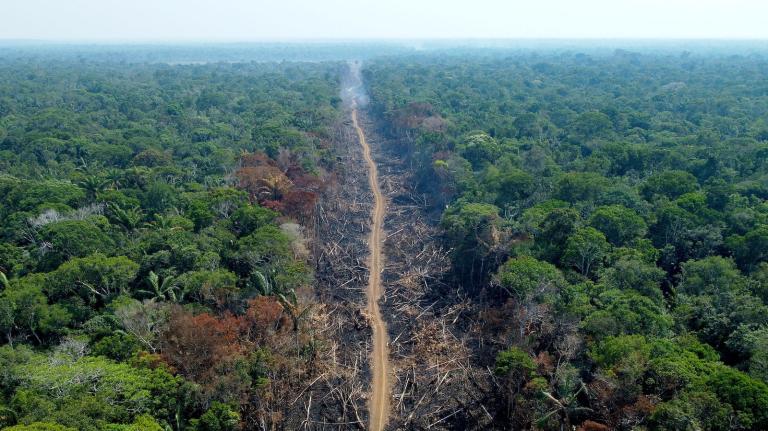Smoke from Canadian wildfires continued to blur skylines throughout the American Midwest and East Coast on Thursday, with Detroit and Washington, D.C., logging the worst air quality among the world’s major cities. Parts of Michigan, Ohio, and Pennsylvania showed an air quality index, or AQI, above 200 — considered to be “very unhealthy” for members of the general public.
It’s not as bad as the East Coast “smokepocalypse” from earlier this month, when Canadian wildfires caused parts of the region to register AQI values as high as 486, nearly maxing out the Environmental Protection Agency’s 500-point air quality scale. But New York City, Chicago, and Minneapolis still clocked in among the world’s 10 worst major cities for air quality on Thursday, and more than 120 million people — a third of the U.S. population — were under air quality alerts. State and local agencies have recommended limiting outdoor activity and closing all doors and windows. In the New York City area, officials said they were making hundreds of thousands of N95 masks available at transit centers, fire stations, and in public parks.
“This smoke is insidious,” said Stuart Batterman, a professor of environmental health sciences at the University of Michigan. He urged people to stay indoors in an environment where the air can be cleaned using a filter.
The smoke is coming from hundreds of wildfires burning all across Canada that the country’s emergency response teams have struggled to contain. Fueled by exceptionally warm and dry conditions, the blazes have consumed some 20 million acres of forest — and more than 250 fires continue to burn “out of control,” according to the Canadian Interagency Forest Fire Centre. Among major cities, Montreal and Toronto had the world’s worst air quality on Sunday and Wednesday, respectively, and Montreal continues to suffer from hazardous smog even though the worst of the smoke has now moved south into the U.S.
Strong air currents have driven the smoke as far south as Knoxville, Tennessee, where the AQI remained above 100 on Thursday — considered “unhealthy for sensitive groups” like young children and the elderly, or people with asthma. To the north in Louisville, Kentucky, officials extended a “code red” alert for air quality, meaning everyone should try to limit their time outside. Smoke has also traveled as far east as Portugal, Spain, and France.
Wildfire smoke produces a range of concerning pollutants, some of which fall into a category called “particulate matter,” or PM. The smallest particles — known as PM 2.5 because they measure less than 2.5 micrometers in diameter, about one-twentieth the width of a human hair — are particularly dangerous. They are so small that they can lodge themselves in people’s lungs, causing inflammation that’s been linked to an increased risk of dementia, as well as death from lung cancer and heart disease.
The EPA’s air quality index takes into account the amount of PM 2.5 in the air, as well as larger particles and four other major pollutants whose concentrations can be exacerbated by wildfire: ground-level ozone, carbon monoxide, sulfur dioxide, and nitrogen dioxide.
In the area around Ann Arbor, Michigan, Batterman said there’s been an uptick in hospitalizations related to this week’s wildfire smoke. He warned that the risks aren’t equally distributed, and that lower-income groups may lack the resources needed to protect themselves. “You need a little bit of money to buy and operate an air filter,” he said.
This wave of smoke is expected to dissipate from the U.S. Midwest and East Coast by the weekend, but it’s unlikely to be the last time wildfire smoke hits the regions. As climate change progresses, scientists say more parched, blistering conditions will set the stage for more wildfires and the smoky skies they produce.
“Smoke used to be seen as a California problem,” said Yifang Zhu, an environmental health expert at the University of California Los Angeles. But this month’s skyrocketing AQI values in the eastern half of the country are showing that climate change is affecting everybody. “We’re just expecting more and more wildfires and smoke impacts,” she said.
Already, the Minneapolis Pollution Control Agency says it’s setting new records for bad air quality. The agency has issued 23 air quality alerts so far this year, breaking the previous annual high of 21, set two years ago. “If you think there has been more air quality alerts than you remember — you are correct,” the agency tweeted. “We usually average 2-3 in a season.”



